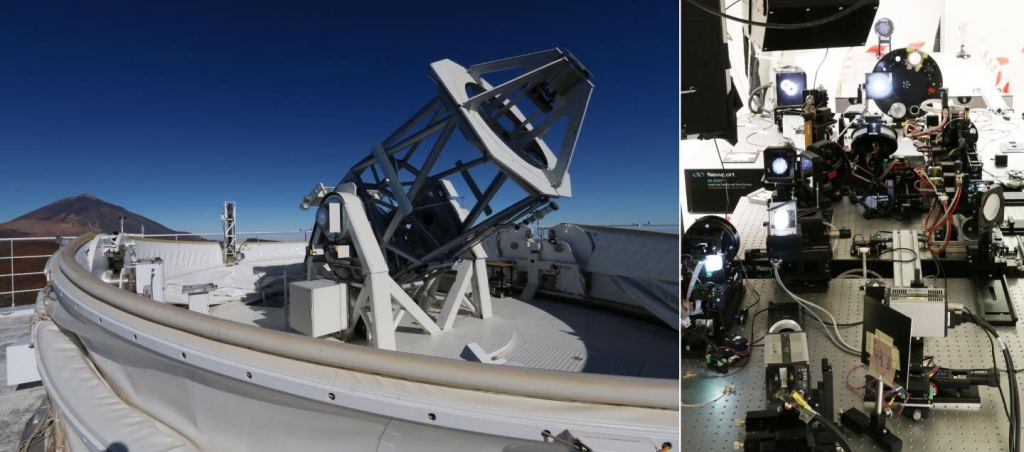I wear glasses for astigmatism. But, as a stargazer with a visual impediment, turns out I’m in good company. The GREGOR telescope, a solar telescope located at the Teide Observatory in the Canary Islands also suffered from an astigmatism that was recently corrected…to very stellar results.
Opened in 2012, GREGOR is part of a new generation of solar (Sun observing) telescopes. Before 2002, solar scopes were quite small in diameter; under one metre. The Sun is close, and VERY bright, so your telescope doesn’t need to be as wide as those used for deep-space imaging. GREGOR itself is 1.5m (compare that to some of the largest telescopes imaging distant faint objects like the Keck Observatory at 10m. But without the special filters/optics used by a solar scope, a regular telescope staring at the Sun would be destroyed by the Sun’s light). A telescope’s power is often related to its ability to magnify. But just like enlarging a low-resolution photo, the more you magnify, the fuzzier the image becomes (that’s why those scenes in crime shows where they yell ‘enhance!’ and a photo grows to reveal a criminal are not realistic). Ultimately, a telescope’s diameter provides the higher resolution photo. GREGOR is designed to take those high-resolution images of our local Star. How high resolution? Imagine being able to distinguish a 50km wide feature on the Sun from 140 million km away – basically the same as being able to read the text on a coin from a kilometre away.


